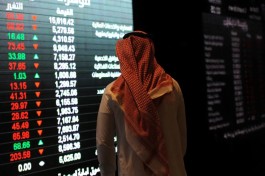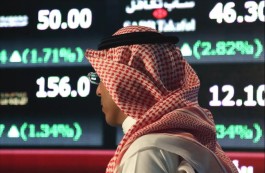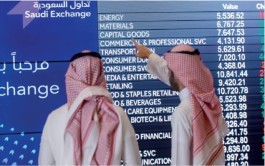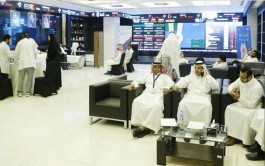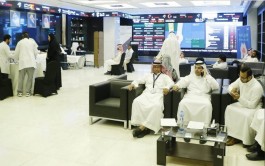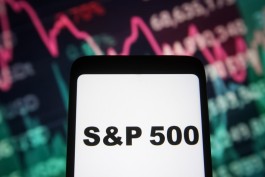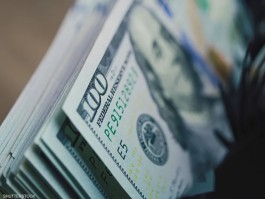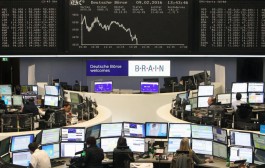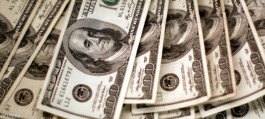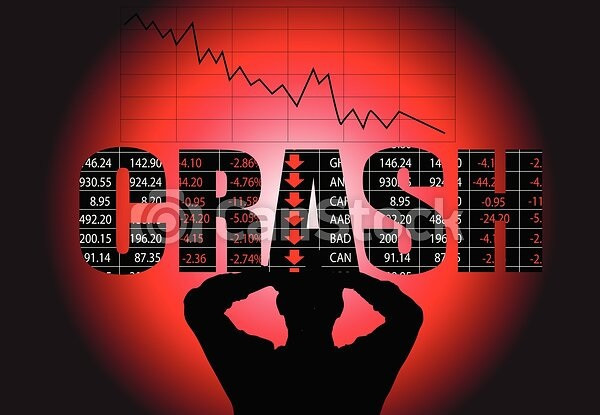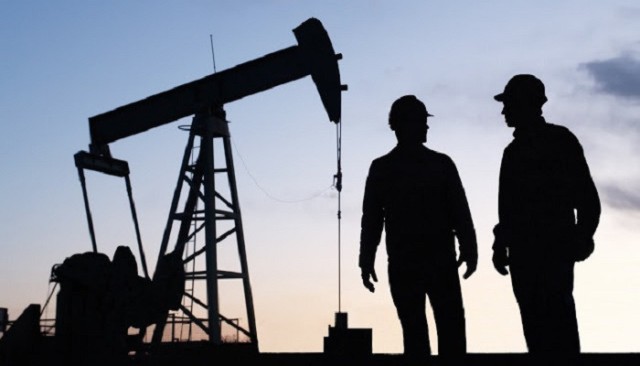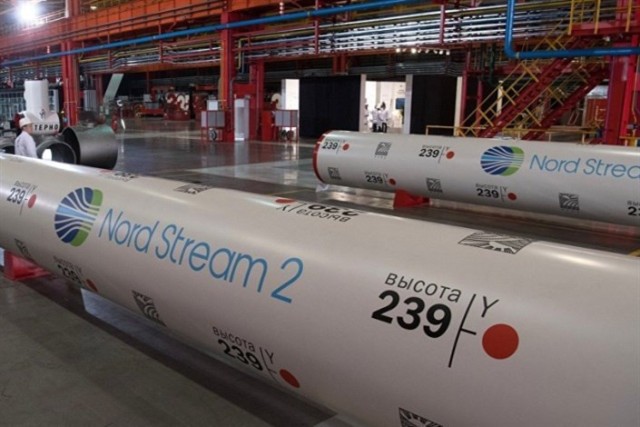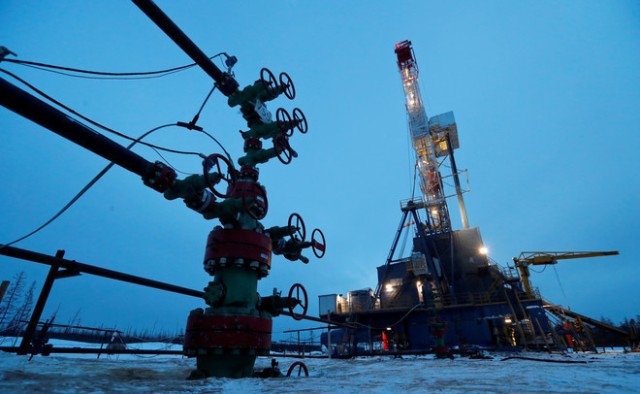Uncertainty is the biggest risk facing investors, which has been reflected in stock movements in recent weeks, with anticipation of a possible Russian invasion of Ukraine and the drumming of the war that actually began today, Thursday, February 24, through Russian missile attacks on Ukrainian military facilities across the country, accompanied by a military landing in The cities of Odessa and Mariupol, has the war begun??
Tensions have risen following Russian President Vladimir Putin's declaration of recognition of the independence of two separate regions, Donetsk and Luhansk, in eastern Ukraine, and the subsequent entry of Russian military forces, raising concerns among officials as well as investors that the move could unleash a major global war on the one hand, and exacerbate the inflation crisis. On the other hand, if the West imposes severe sanctions on Russia, it may impede oil and gas supplies to Europe.
During the days of the past crisis, global stock markets witnessed proactive selling waves, which the United States and the European Union followed by imposing strong sanctions on Russian banks, entities and individuals, while Germany decided to suspend the approval of the Nord Stream 2 gas pipeline from Russia, which cuts off hopes of boosting supplies. Gas in Europe, which suffers from a tight supply and a record high prices.
These declines came at a time when the market is already suffering from inflationary pressures in prices and a rise in borrowing costs, which prompted investors to flee from risky assets and move towards safe assets, especially gold, which was the winning horse so far from the crisis, prompting it to break the 1916 dollar barrier for an ounce for the first time since June 2021, and of course it is no secret to anyone that these geopolitical concerns are the most important factors that supported oil prices to approach levels of $100 per barrel for the first time since 2014; Brent crude recorded a level of $ 103 a barrel in the Thursday (February 24) session.
US stocks also fell sharply in recent sessions, as the Dow Jones Industrial Average lost more than 3,700 points, to record 32,300 points today, Thursday, as the shares of all sectors on the American Stock Exchange fell even the energy sector, despite the jump in oil prices.
These losses were enough to push Standard & Poor's to enter into a corrective movement, after it lost more than 15% of the record level it recorded on January 3, at approximately 4,800 points, which has not happened to the broader index since February 2020, when the market was affected by concerns about the outbreak of the Corona pandemic.
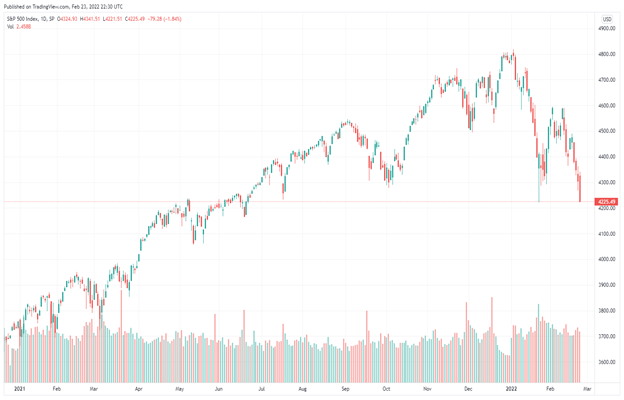
* Performance of the Standard & Poor's Index since 2021 *
In fact, the strong losses on Wall Street were not the result of the past few days, as the recent Russian escalation was only confirmation of investors' concerns about the escalation of tensions between Moscow and Kiev, and market movements were already pricing these fears, and evidence of that is the downward trend of stock indices since the beginning year, although it started 2022 at record levels.
In addition to this, concern about inflation and the Federal Reserve’s tendency to interest rates this year, and the strong profits and revenues announced by major companies were not enough to enhance investors’ confidence in the face of these risks, although about 80% of the total companies that announced their business results so far have managed to exceed Analysts' expectations, according to FactSet data.
The most prominent example of this is technology stocks. Despite the strong financial performance in the last quarter of 2021, geopolitical tensions came to deepen their wounds, which were caused by high inflation rates and US bond yields, which raised concerns about the future profits of these stocks, which depend on borrowing. Mostly to continue explosive growth, which made the tech-dominated Nasdaq index the biggest loser among the indices, by more than 16% since the beginning of the year.
In Europe, although it is the most affected by the repercussions of the Russian-Ukrainian crisis, the impact of the increase in tensions was less severe on European stocks, as losses were slight, but the European Stoxx 600 index has fallen by about 7% since the beginning of this year, and Asian stocks were also affected by the Russian escalation in Ukraine. Japan's Nikkei fell more than 8%, and China's Shanghai Composite fell more than 4%.
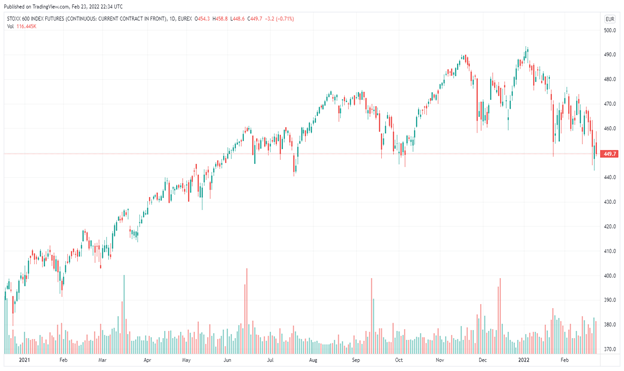
* European Stoxx 600 Index *
Of course, geopolitical concerns have wiped out billions of dollars from the value of Ukrainian and Russian stocks, with Russia's main index, MOEX, down more than 22% this year, and the Russian ruble falling against the US dollar to its lowest level since 2020.
Despite the continuing uncertainty about the developments of the crisis, it is often the decline due to short-term political events, and stocks tend to recover eventually, especially with inflation expected to reach its peak soon. Record highs in 2021









